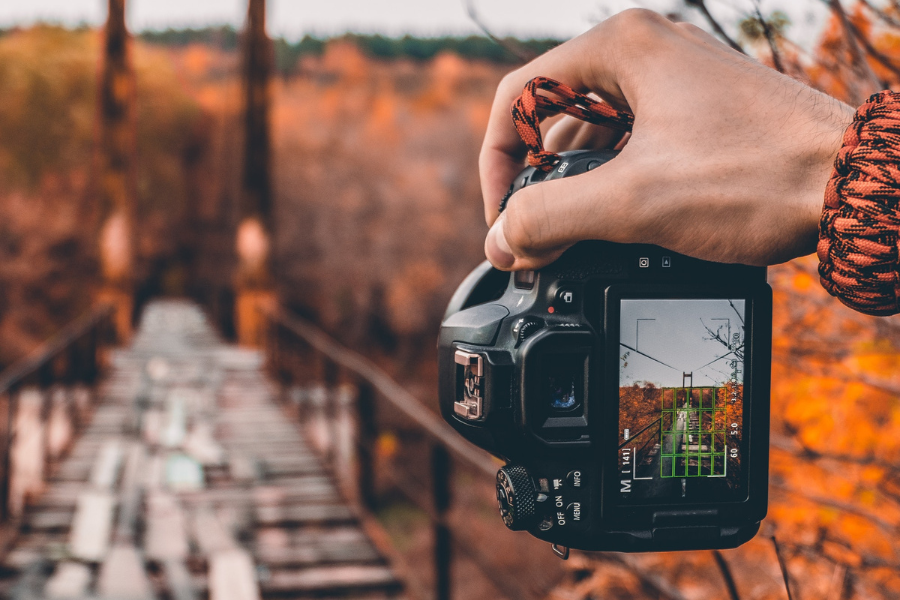If you’re just getting started in the world of photography, you may feel overwhelmed by all there is to learn. But never fear — while it can take years to truly master the craft, understanding and incorporating key photography concepts from the start will lay a solid foundation for your work and set you up for success. Today we’ll be digging into essential topics like ISO, shutter speed, and depth of field so that you understand their impact on your photos and how to control them in manual mode.
We’ll also provide tips and tricks to help you practice and master these concepts. In time, you’ll be equipped to create stunning images you can be proud of.
Introduction to Key Photography Concepts
Photography requires a deep understanding of both your camera and the science of light. There are a few key concepts that all photographers need to understand, regardless of the type or style of photography they prefer. Whether you shoot portraits in a studio, weddings in a church, or sweeping landscapes outdoors, you will need to be familiar with settings such as ISO, shutter speed, and depth of field.
ISO stands for International Standards Organization, and it refers to the sensitivity of your camera sensor to light. The higher the ISO number, the more sensitive your camera is and the brighter your image will appear. However, a high ISO also increases digital noise in your photos. The ISO setting is one of the most important factors in creating a quality image and should be adjusted accordingly for each shot.
Shutter speed refers to the length of time for which the camera shutter stays open when taking a picture. A fast shutter speed allows you to capture motion, while a slow shutter speed allows more light into the camera and can produce a longer exposure. Knowing how to adjust the shutter speed is key for capturing motion, freezing action, or creating stunning night-time photos.
Finally, depth of field (DOF) concerns the distance between the nearest and farthest objects in your scene that appear sharp in focus. A shallow depth of field emphasizes one part of the image, while a larger depth of field keeps more of the scene in focus. Controlling DOF is essential for creating stunning portraits and isolating your subject from the background.
Now that we’ve covered the basics and understand how each setting affects our photos, let’s take a closer look at each concept in turn.
ISO: Understanding Camera Sensitivity
The ISO setting on your camera refers to the sensitivity of your camera’s sensor to light. A lower ISO means less sensitivity and therefore requires more light, while a higher ISO increases sensitivity and requires less light. As we mentioned before, increasing the ISO will result in brighter images, but it also introduces digital noise or grain into your photos.
All cameras are different but they all include a common set of ISO values, also known as “stops.” Most cameras start with a base ISO of 100 (although some go as low as 50) and continue with ISO values of 200, 400, 800, 1600, 3200, 6400, and so on.
The ISO setting is an important factor in creating a quality image and the optimal setting will depend on the lighting conditions of the scene you are shooting. Generally speaking, it’s best to use the lowest ISO possible while still ensuring that your images have adequate exposure.
Here are some important things to remember about ISO:
1. A higher ISO means a lighter photograph.
Remember, ISO is your camera sensor’s sensitivity to light, so when you increase your ISO, you make it more sensitive to light, therefore, your photos will be lighter.
2. Higher ISO also means your photos will have more noise.
If increasing your ISO makes your photos brighter, it seems it would be simple to just bump your ISO if your photos are too dark, but that is definitely not the case. As we mentioned before, the higher you increase your ISO, the more noise, grain, and unwanted digital artifacts your photos will have. Instead, you should always try to adjust your shutter speed and aperture to allow more light into your sensor first.
3. You should always shoot at the lowest ISO possible for your shooting conditions.
Although it can be tempting to increase your ISO to get a brighter photo, you should always strive to keep your ISO as low as possible. This will ensure that your photos are of the highest quality and with the least amount of digital noise.
Shutter Speed: Capturing Motion and Exposure
Shutter speed is simply the length of time your camera shutter is open, exposing the sensor (or film if you’re using a film camera) to light passing through your lens. Shutter speed is used to properly expose a photo and also to freeze motion or portray subjects in motion.
Shutter speed is usually extremely fast — measured in fractions of a second. The common shutter speeds built into many cameras will double from one to the next. For example, 1/500, 1/250, 1/125, 1/60, 1/30, 1/15, 1/8, and so on. Remember, these are fractions of a second, so 1/500th of a second is a much faster shutter speed than 1/8th of a second.
A fast shutter speed will capture motion by freezing it in time, while a slow shutter speed allows you to blur the motion and create dramatic effects. The desired effect of the photo should determine the type of shutter speed used. For example, if you’re shooting a moving subject like a car or an animal, you may want to use a faster shutter speed (at least 1/500 or faster). On the other hand, if you’re shooting a portrait or landscape you may want to use a slower shutter speed (1/125-1/60). If you’re shooting a long exposure photo, for example of the Milky Way or to capture star trails, then you’ll use a much longer shutter speed of several seconds or more (only if you’re using a tripod).
When setting your shutter speed manually, keep these things in mind:
1. Use faster shutter speeds to freeze motion, but your photos will be darker.
As we discussed above, faster shutter speeds will freeze any motion in the scene, but they also require more light to expose properly. This means you may need to increase your ISO or open up your aperture to allow more light into the camera.
2. Slower shutter speeds blur motion, but allow more light into your sensor.
Conversely, slower shutter speeds will blur motion and create a ‘trailing’ effect of any moving subjects. This can be great for creative effects, but it also allows more light into the sensor (which means you will need to adjust your ISO and aperture accordingly).
3. Consider the focal length of your lens when choosing your shutter speed.
The longer the lens, the faster the shutter speed you’ll need. A good rule of thumb is to never use a shutter speed that’s faster than your lens’ focal length. For example, if you’re using a 50mm lens, then use 1/60 or faster. If you’re using a 300mm lens, then use 1/320 or faster to avoid motion blur from camera shake. Of course, if you have your camera firmly on a tripod, you can use any shutter speed you need.
Depth of Field: Creating Focus and Depth in Your Images
Depth of field is one of the most important concepts to understand and master when it comes to photography. It has a huge impact on the overall look and feel of your images and can be used to create a wide range of creative effects. When used effectively, it can mean the difference between a basic snapshot and a beautiful photograph.
Simply put, depth of field is the distance between the closest and farthest objects in a photograph that appears acceptably sharp and in focus. The rest of the image will appear blurry and out of focus. A shallow depth of field is when only a small portion of your photo is in focus, while a large (or wide) depth of field means there will be more of the photo in focus.
You can use depth of field to draw the viewer’s eye where you want it to go. For example, use a shallow DOF to blur out distracting background elements, or use a wider DOF to make sure all the important details are in focus. Experimenting with different aperture settings can help you find the perfect balance for your photos.
There are several factors that affect the depth of field in your images:
- Aperture: Narrower apertures (large numbers like f/16 or f/22) will give you a greater depth of field with more objects appearing sharp, while wider apertures (small numbers like f/2.8 or f/4) will give you a shallower depth of field with fewer objects appearing sharp.
- Subject’s distance from the camera: As the distance between your camera and the subject increases, your depth of field will decrease.
- Focal length: Wide angle lenses (35mm or lower) give you a greater depth of field than longer focal lengths (50mm or more). In other words, the longer your lens, the more shallow your depth of field will be.
Balancing ISO, Shutter Speed, and Depth of Field for Perfect Exposure
Now that you understand the basics of ISO, shutter speed, and depth of field, it’s time to put it all together. When shooting in manual mode, these three settings will work together to give you perfect exposure. In other words, depending on the lighting conditions, you will need to adjust your ISO, shutter speed, and depth of field to get the right exposure for your shot. This is known as the ‘exposure triangle’.
For example, if you find that your photo is too dark (underexposed) then you may need to increase your ISO, increase your shutter speed, or open up the aperture. It all depends on what’s most important to you to achieve in your final image. Do you want to freeze motion or create a shallow depth of field? Then you will need to adjust your shutter speed and aperture, respectively.
On the other hand, if your photo is too bright (overexposed) then you may need to decrease your ISO, decrease your shutter speed, or stop down the aperture. Again, it all depends on what’s most important to get the desired effect.
Just remember that all of these settings have an effect on each other, so when you adjust one of them, you may need to adjust the others as well to get the perfect exposure.
Tips for Practicing and Mastering Key Photography Concepts
Once you understand the basics of ISO, shutter speed, and depth of field, it’s time to practice and perfect your craft. It may not seem like it now, but choosing your ISO, shutter speed, and aperture settings will eventually become second nature to you as a photographer. But as a beginner, when you’re choosing what exposure settings to start with, ask yourself these questions about the scene you’re getting ready to shoot:
1. What are the lighting conditions?
Now you know, you first want to choose the lowest ISO possible for your lighting conditions. If your scene is well-lit, you can start with a low ISO of 100-200. If you’re indoors or outside in overcast conditions, you may need to start at 200-400. If it’s darker inside, you may need to push the ISO as high as 1600 or more.
2. Can your image handle a certain amount of grain or noise?
Some styles of photography, such as street photography and fine art portraiture, can handle a bit of grain or noise in the image. In fact, many photographers prefer the artistic moodiness it creates. If you’re shooting with higher ISO settings (800-3200), keep an eye on the level of detail and grain in your images to get an idea of how much you are comfortable with before it starts introducing too much noise. You can always add noise in post but you cannot remove it.
3. Is your subject in motion?
The shutter speed you choose will depend on whether your subject is in motion or not. If they are, then it’s important to choose a faster shutter speed so that they appear sharp and clear in the image. That is unless you want to capture motion blur, in which case you would choose a slower shutter speed. If your scene is dark and you want to freeze motion, you’ll need to either increase your ISO or widen your aperture so that there’s enough light to properly expose your photograph.
4. How much of your scene do you want in focus?
If you want to control the depth of field in your shot, then you need to adjust your aperture accordingly. If you want more of the image to be in focus (a wide depth of field), then you will need to stop down your aperture. If you want less of the image in focus (a shallow depth of field), then you will need to open up the aperture.
5. Are you using a tripod?
If you’re able to shoot with a tripod, and your subject isn’t moving, you have more options when it comes to ISO and shutter speed settings. You can set your camera to its base ISO and set your shutter speed to any length of time you need to achieve perfect exposure. Then, use your aperture to achieve the artistic look you want — including depth of field.
By asking yourself the above questions before taking the shot, you’ll be able to quickly choose the best ISO, shutter, and depth of field settings to create the perfect exposure — no guesswork required. And if you practice with different scenes and settings often enough, soon you’ll be able to adjust these settings in manual mode without having to think about it.
Final Thoughts
Taking great photographs is a skill that comes with time, but with the right knowledge and practice, you’ll be well on your way! From learning about camera sensitivity with ISO to mastering motion capture with shutter speed and creating focus in images through depth of field, these fundamental photography concepts are essential for taking captivating photos. Ultimately, understanding how to balance these three settings for perfect exposure is the next step.
With dedication and perseverance, even novices can sharpen their skills over time. So don’t forget, get out of Auto Mode and start experimenting with your camera settings today! Pull out your camera and practice shooting the same scene with different settings and see how those changes affect your image. As you work at incorporating these concepts into your pictures, you’ll find yourself able to capture more meaningful images than ever before.





